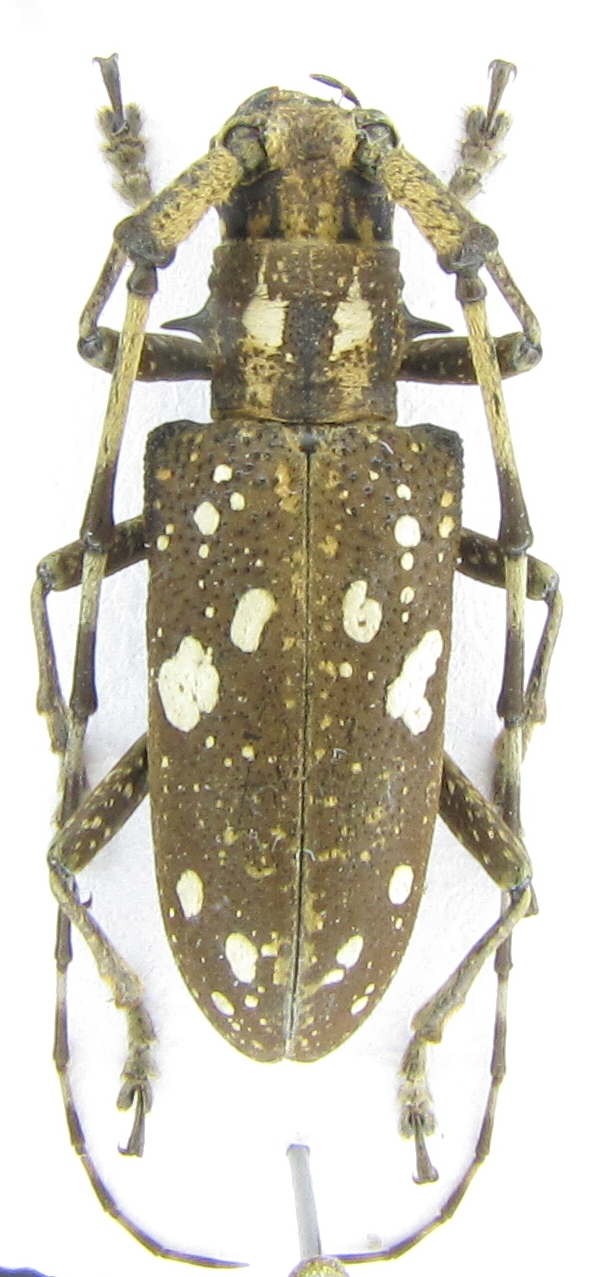| Author |
 Topic Topic  |
|
|
Vitali
Member Rosalia
  
Estonia
994 Posts |
 Posted - 09/02/2014 : 00:38:13 Posted - 09/02/2014 : 00:38:13



|

419.89 KB
I wanted to name this beetle Paraleprodera carolina (Fairmaire,1900), but white pattern forms rather spots than bands in pronotum similar to Paraleprodera laosensis and shiny tubercles in the base of elytra are much weaker than in the photo of P. carolina which I could find here and here. |
Edited by - Gerard on 28/01/2016 20:02:54 |
|
|
Gerard
Scientific Collaborator
    
France
5298 Posts |
 Posted - 09/02/2014 : 09:39:41 Posted - 09/02/2014 : 09:39:41



|
Hello Vitali. For me it is much Paraleprodera carolina (Fairmaire, 1900), the difference with P. laosensis is located at the level of the white spots in the bottom of the shoulders.
P. carolina does not have these spots. |
Edited by - Gerard on 09/02/2014 09:40:46 |
 |
|
|
Vitali
Member Rosalia
  
Estonia
994 Posts |
 Posted - 09/02/2014 : 13:01:51 Posted - 09/02/2014 : 13:01:51



|
Thank you, Gerard.
If there are only these two species available than everything is OK  |
 |
|
|
MONO
Member Purpuricenus
 
China
334 Posts |
 Posted - 19/09/2016 : 07:04:34 Posted - 19/09/2016 : 07:04:34



|
Now, in my opion, there are two different points between Vitali 's picture and the real Paraleprodera carolina.
It's more like Paraleprodera laosensis through it still has a different point.
|
 |
|
|
Francesco
Forum Admin
    
Luxembourg
9454 Posts |
 Posted - 19/09/2016 : 07:14:11 Posted - 19/09/2016 : 07:14:11




|
| I agree with Mono, a specific difference seems to be the different size of the granules on the basal third of the elytra. |
 |
|
|
MONO
Member Purpuricenus
 
China
334 Posts |
 Posted - 19/09/2016 : 07:44:04 Posted - 19/09/2016 : 07:44:04



|
 I saw a typical Paraleprodera: laosensis that my friend have in Yunnan! So, Paraleprodera laosensis is also in China now. I saw a typical Paraleprodera: laosensis that my friend have in Yunnan! So, Paraleprodera laosensis is also in China now. |
 |
|
|
Vitali
Member Rosalia
  
Estonia
994 Posts |
 Posted - 19/09/2016 : 13:13:47 Posted - 19/09/2016 : 13:13:47



|
quote:
Originally posted by Francesco
I agree with Mono, a specific difference seems to be the different size of the granules on the basal third of the elytra.
Yes, exactly! Thank you, Francesco, for pointing this out.
This was the reason, why I initially posted this ad. Although the white spots between shoulders and scutellum are much reduced in my specimen, the granulation at the base is very different from that P. carolina and resembles a thin granulation of P. laosensis.
Thank you, MONO, for rising this question again.
By the way, why is P. laosensis absent in BioLib? |
Edited by - Vitali on 19/09/2016 13:35:23 |
 |
|
| |
 Topic Topic  |
|


